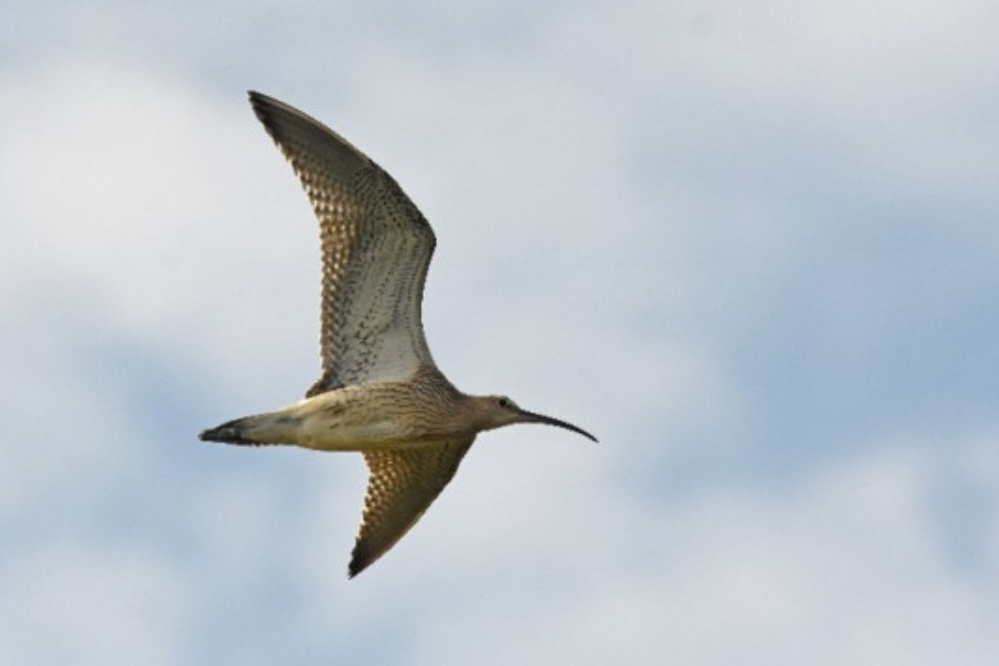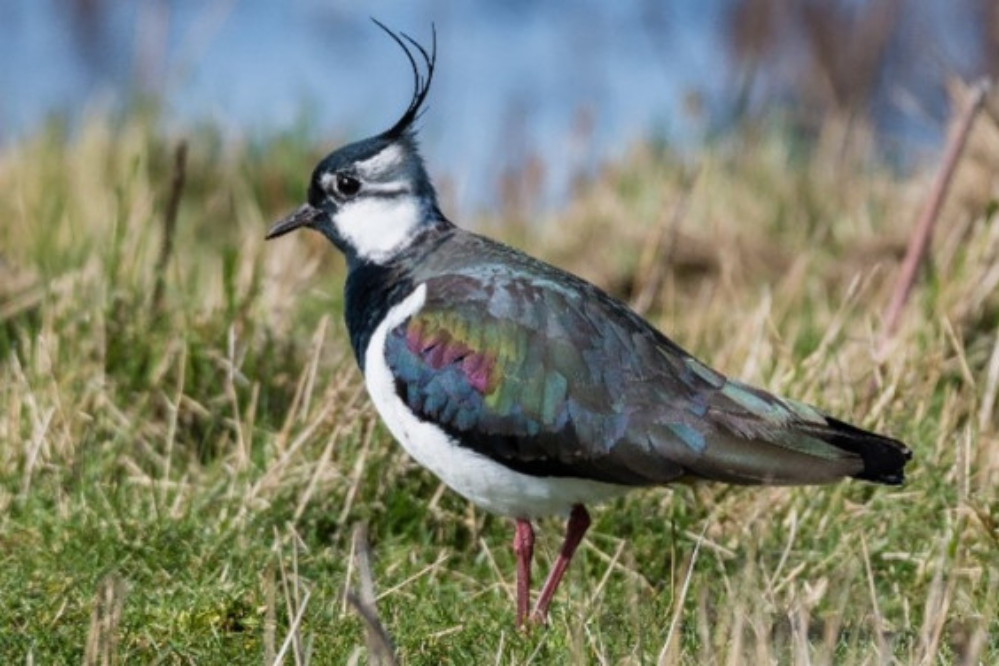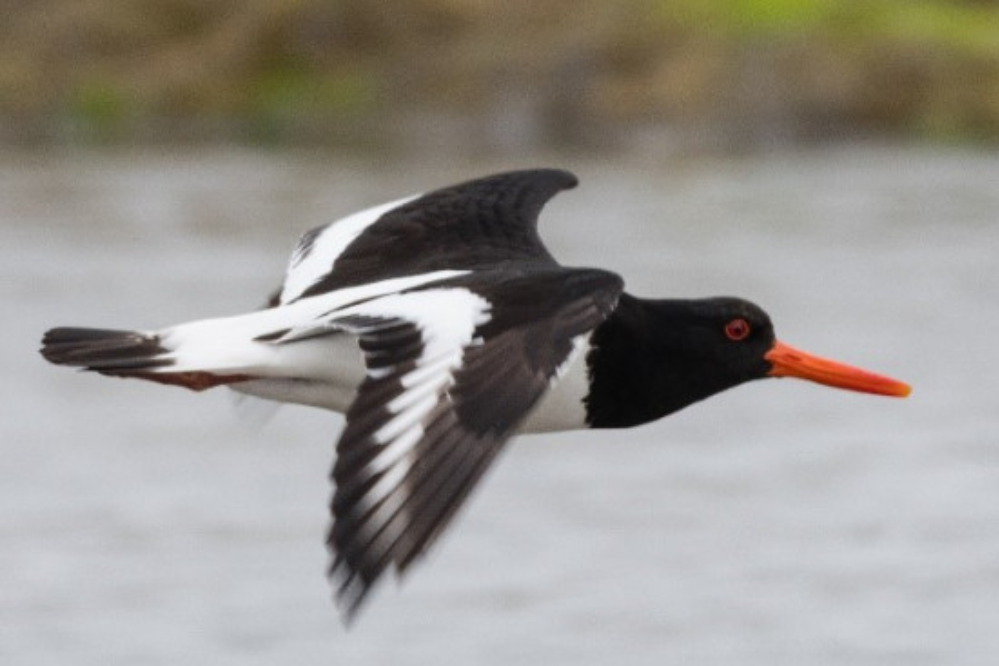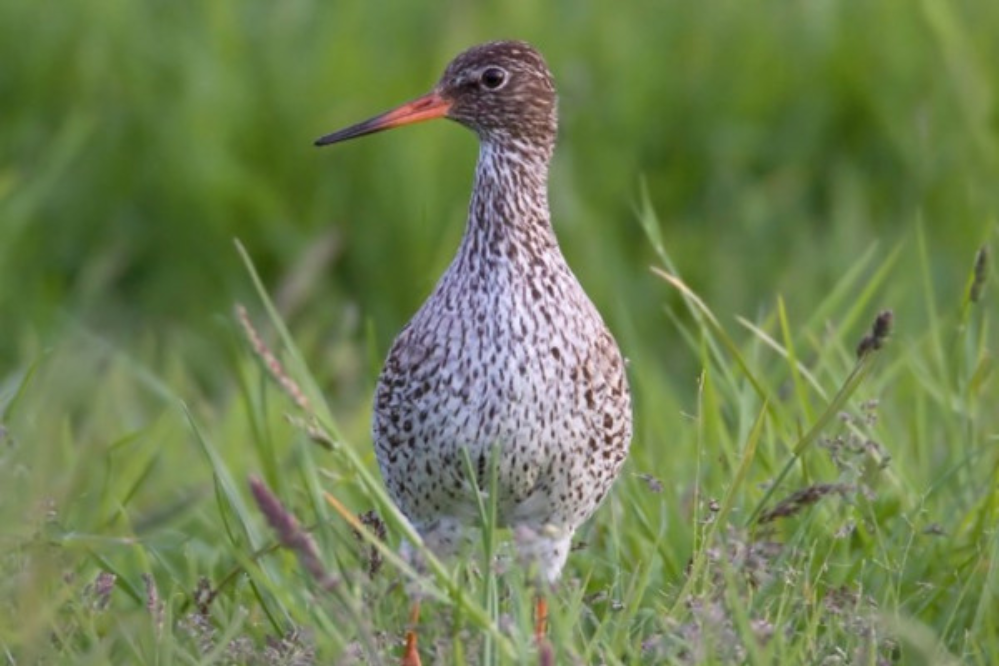 The key information to collect in many wader surveys is the birds' behaviour. This can be used to estimate the number of birds attempting to nest in an area, and to indicate the number of these birds which manage to hatch or fledge chicks.
The key information to collect in many wader surveys is the birds' behaviour. This can be used to estimate the number of birds attempting to nest in an area, and to indicate the number of these birds which manage to hatch or fledge chicks.
Most aspects of wader ecology vary between sites and years, so the information here should be used as a guide, not as definitive rules.
The most important behaviours can be grouped as:
- Display: signs that birds have territories or nests, including birds seen on active nests; most often observed in early spring.
- Repeated alarm-calling, 'mobbing', or seen with young: signs that birds are rearing chicks or that eggs are close to hatching; most often observed in late Spring or early Summer as adults alert their young to potential predators.
Territorial displays and ‘song’ can be difficult to separate from alarm/agitation behaviours for beginners, but they become easier to distinguish with a little practice. It is rarely an exact science, and records are always estimates, so just record as accurately as you can. If you have a pair of binoculars available, they can be helpful in finding waders and recording behaviour.
Curlew
Identification

A large brown wader with a long, curved bill. In flight, its prominent white rump and darker wingtips are visible. Despite being the largest wader, it can be surprisingly unnoticeable, particularly during the incubation period between peak display and chick-rearing. 'Off-duty' adults - parents not currently incubating or guarding chicks - can travel long distances to feed, so single birds are often observed. Curlew pairs are solitary i.e. they do not nest in colonies, but they may nest in loose groups in high-density areas.
Habitat
- Moist grass and heather moors (even burnt areas) and rushy upland pastures up to 600 m (sometimes up to 750 m).
- Southern heaths and lowland river valleys with water meadows, hay, silage or lush grass fields.
- Boggy woodland clearings, arable areas and dunes (occasional).
Behaviour
Displaying and/or 'singing'

Pairs perform walking displays, and males have a distinct bubbling 'song'. These make Curlew very detectable in the early breeding season.
The display flight involves shivering wings, a long descending glide and calling with long, drawn-out notes increasing in tempo to a rhythmic drill.
Slow, deep whistles to bubbling notes of Curlew display 'song'
Repeated alarm-calling, mobbing, or seen with young
This behaviour peaks in June. It can vary in timing between site and year; it takes place 4 - 6 weeks after peak display activity.
When eggs are near hatching, or there are young, a curlew pair will be much noisier and stand on the ground at a distance from you (reluctant to leave the area), or fly around you or predators alarm-calling ('mobbing'). Alarm calls vary but will be persistent and sound agitated. A harsh, guttural 'yak-ak-ak' call means there are young nearby, or a nearly-hatched nest. Young curlew are generally difficult to spot and will hide if adults alarm call.
'Courli' to 'yak-ak-ak' alarm/agitation calls indicating chicks are nearby
'Yak-ak-ak' alarm/agitation calls indicating chicks are nearby
Curlew confusion risks
Do not include Curlew observed making single alarm calls that are quick to leave the area in 'alarm-calling/with young'. Only include birds that are reluctant to leave the area and persistently alarm calling.
Lapwing
Identification
 Black (with green and purple iridescence) and white, medium-sized wader with a distinctive wispy crest. Males have longer crests, and a complete black bib (chest). Females have shorter crests and variable amounts of white in the bib.
Black (with green and purple iridescence) and white, medium-sized wader with a distinctive wispy crest. Males have longer crests, and a complete black bib (chest). Females have shorter crests and variable amounts of white in the bib.
Lapwing plumage and calls make them very conspicuous. Pairs may nest singly or in small groups, and males can have more than one female.
Habitat
- Flat or rolling open country (not steep areas) with short, patchy or no plant cover, up to 1000m.
- Rough pastures, stubbles, fallows, arable (recently ploughed or with young crops) and breckland.
- Lake margins, damp meadows, upland rushy fields, wet moors and mosses.
- Saltings, dunes and machair, and sometimes shingle and mudflats.
- Industrial wastes, land cleared for development and gravel pits.
Behaviour
Displaying and/or 'singing'
 Distinctive 'peewit' calls and a tumbling display flight show the breeding area early in the season. Scrape-forming (where the lapwing will lay eggs) can be watched over several days, when the orange-buff under-tail of rotating males and the scratchy call they make while scraping are particularly conspicuous.
Distinctive 'peewit' calls and a tumbling display flight show the breeding area early in the season. Scrape-forming (where the lapwing will lay eggs) can be watched over several days, when the orange-buff under-tail of rotating males and the scratchy call they make while scraping are particularly conspicuous.
If you keep distance or use cover (ideally in a vehicle), incubating adults on nests can be easy to spot. Include incubating birds in 'displaying and/or singing'.
Lapwing display calls
Repeated alarm-calling, 'mobbing', or seen with young
This behaviour peaks in May. It is very variable between sites and years, but will occur 4 - 6 weeks after peak display activity.
Adult lapwings mobbing you or predators is a sign that eggs are nearly hatching or that young are on the ground. Lapwing chicks and adults on guard are relatively easy to spot - the white on the back of chicks' necks is noticeable when they're moving. Compared with the display calls, adult alarm calls have a harsh tone.
Warning call of a parent to their chicks
Lapwing confusion risks
Differentiating between display and alarm-calling or mobbing is more difficult with Lapwing. At the relevant times of the year, mobbing you or predators and reluctance to leave the area are key to the 'alarm-calling or seen with young' category, as are observations of adults with chicks - this is relatively common.
Oystercatcher
Identification
 A large black and white wader with an orange bill. Oystercatchers return to the same area and even the same site to nest. Pairs may nest singly or in loose groups.
A large black and white wader with an orange bill. Oystercatchers return to the same area and even the same site to nest. Pairs may nest singly or in loose groups.
Habitat
In inland areas:
- Shingle beds or banks of rivers, lakes and lochs.
- Arable and pasture fields.
- Moorland to 600m.
- Sand and gravel workings, industrial sites and waste ground, on building roofs or in fenced areas.
Also nests in coastal areas.
Behaviour
Displaying and/or 'singing'
 Loud piping calls proclaim territories and pairs may be seen scraping nests. Adults on the nest are more easily spotted from a large distance (or more closely if you are in a vehicle).
Loud piping calls proclaim territories and pairs may be seen scraping nests. Adults on the nest are more easily spotted from a large distance (or more closely if you are in a vehicle).
Bubbling trill 'prrrrr' and 'kli-klikli' of standard display song indicating territory:
Repeated alarm-calling, 'mobbing' or seen with young
This behaviour peaks in June. It is very variable between sites and years, but will occur 4 - 6 weeks after peak display activity.
When eggs are near hatching, or adults are with young, oystercatcher pairs will be much noisier. They will stand on the ground at a distance or fly around you (and predators) repeatedly, alarm-calling ('mobbing') with high-pitched squeaks. Chicks are relatively easy to spot, often remaining in the open with adults. Chicks are fed by the parents.
Shrill 'peep!' alarm/agitation calls indicating chicks are nearby:
Oystercatcher confusion risks
Differentiating between display and alarm can be more difficult with Oystercatcher. Reluctance to leave the area, and focus of flight around predators (or you) indicate alarm-calling rather than display.
Redshank
Identification
 Generally harder to spot and identify than larger waders. Redshank are medium-sized brown waders with strikingly red bill and legs. In flight, they have a noticeable white 'cigar' on their back and a black and white barred tail. Redshank pairs may nest singly or in groups, and are very site-faithful, often returning to the same part of a field to nest each year.
Generally harder to spot and identify than larger waders. Redshank are medium-sized brown waders with strikingly red bill and legs. In flight, they have a noticeable white 'cigar' on their back and a black and white barred tail. Redshank pairs may nest singly or in groups, and are very site-faithful, often returning to the same part of a field to nest each year.
Habitat
- Saltmarshes, water meadows, damp marshland and rushy fields.
- Rough pastures and grass moorland (e.g. bents, mat-grass) to 500m.
- Shingle near water, flooded gravel pits and dunes.
Behaviour
Displaying and/or 'singing'
 Noisy adults and wing-lifting displays show territories, which are often mingled with Lapwing. The song is a loud, musical 'tül-tül-tül-tül-tuliiu-tuliiu-tuliiu’. Incubating birds generally flush silently off the nest, 50 - 200m from the person approaching. A vigorous 'bobbing' movement while walking through vegetation is a good indication of a bird returning to a nest.
Noisy adults and wing-lifting displays show territories, which are often mingled with Lapwing. The song is a loud, musical 'tül-tül-tül-tül-tuliiu-tuliiu-tuliiu’. Incubating birds generally flush silently off the nest, 50 - 200m from the person approaching. A vigorous 'bobbing' movement while walking through vegetation is a good indication of a bird returning to a nest.
Musical 'tül-tül-tül-tül-tuliiu-tuliiu-tuliiu’ song
Repeated alarm-calling, 'mobbing' or seen with young
This behaviour peaks in June. It is very variable between sites and years, but will occur 4 - 6 weeks after peak display activity.
Adults flushed near young or eggs that are close to hatching will fly around with a 'tew-tew-tew' alarm call. Hiding chicks can be spotted as they run to greet returning parents.
Persistent ‘tew-tew-tew’ alarm-calls after being flushed, indicating the presence of young
Redshank confusion risks
When flushing birds, watch whether they fly around you persistently alarm-calling (at relevant times of the year, this means they are likely with young), or silently leave the area (this means they are unlikely to be with young).
Snipe
Identification
Generally harder to spot than larger waders unless displaying or flushed at close range due to their excellent camouflage. Snipe are medium-sized streaky waders with a long straight bill. Pairs nest singly (not in colonies).
Habitat
- Marshes, bogs, swamps, water meadows, sedge margins of lakes and pools and damp rushy pockets in moorland or grassland.
- Occasionally salt marshes or wet woodland clearings.
- Dry heather and grass moors and rough pastures up to 750m (occasional).
Behaviour
Displaying and/or 'singing'
The male's 'drumming' flight and 'chipping' calls (from the ground or in flight) are the most obvious sign of territory. These are most common at dawn and dusk on wet, foggy, still days. 'Drumming' initially occurs over a wide area but as incubation progresses it is increasingly localised above the nest site. Display flights cease after the eggs hatch.
'Drumming' display flight calls made using specially adapted tail feathers
'Chipping' vocal calls, often from perch, but also made alongside 'drumming' sound in flight
Repeated alarm-calling, 'mobbing' or seen with young
Chicks are most likely to be on the ground in June, but this is very variable between sites and year. It occurs 3 - 5 weeks after peak display activity.
Snipe rely on camouflage so do not repeatedly alarm-call or 'mob', but adults with young may come close to you.
Snipe confusion risks
Snipe do not have any obvious alarm behaviours or calls that indicate the presence of young. When flushed, Snipe can make a 'scraping' single note, which is often repeated - this can be heard all year round and does not indicate the presence of young.
Snipe flush alarm calls. These do not indicate the presence of young:
Include 'drumming' and 'chipping' in 'display and/or singing'. Only observations of young - which are quite rare - should be included in 'repeated alarm-calling, 'mobbing', or seen with young'.
The material is mostly summarised or adapted from the species pages in BTO Guide ‘A Field Guide to Monitoring Nests’ (Ferguson-Lees et al. 2011).